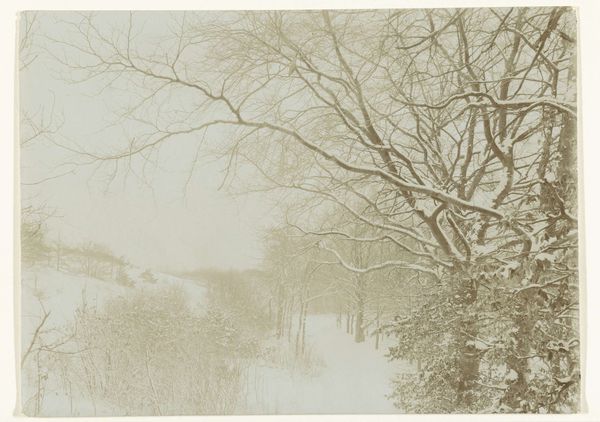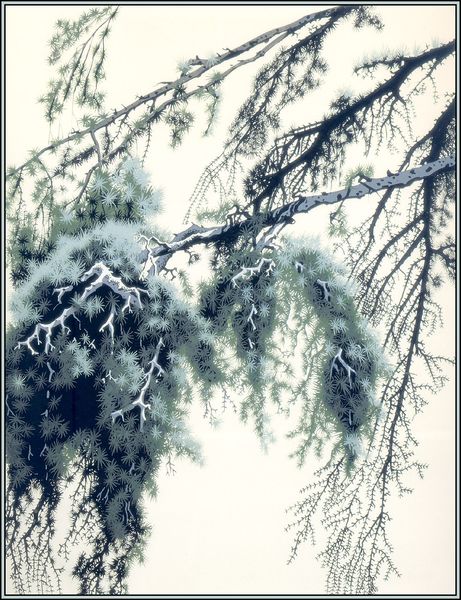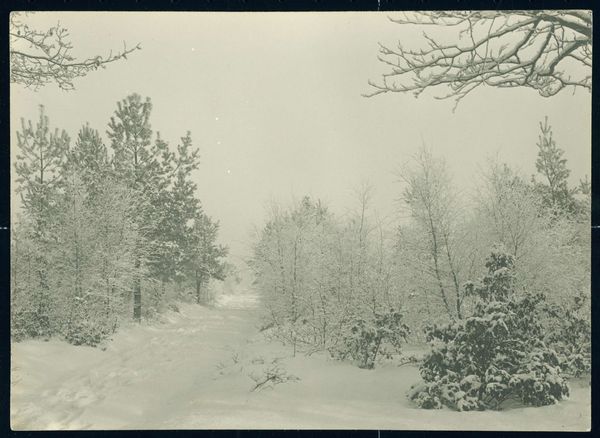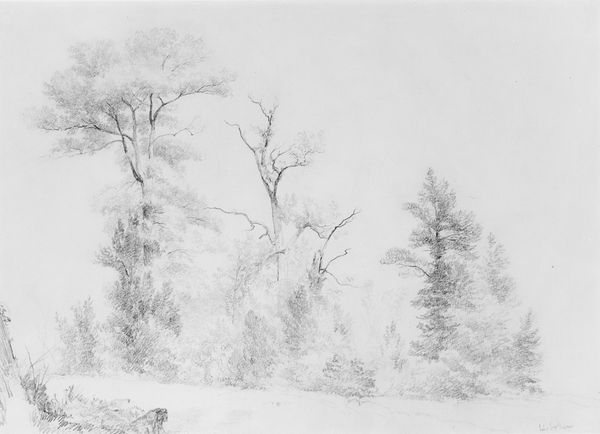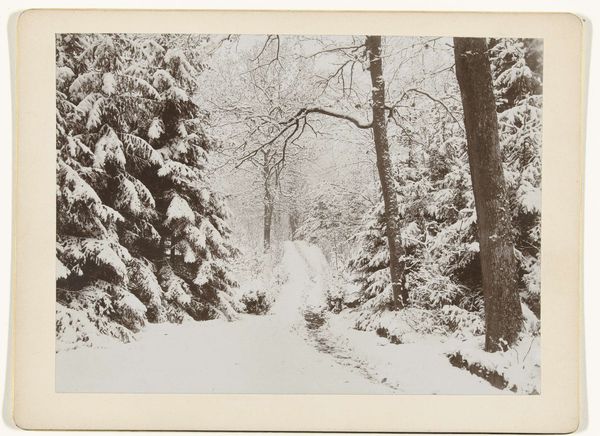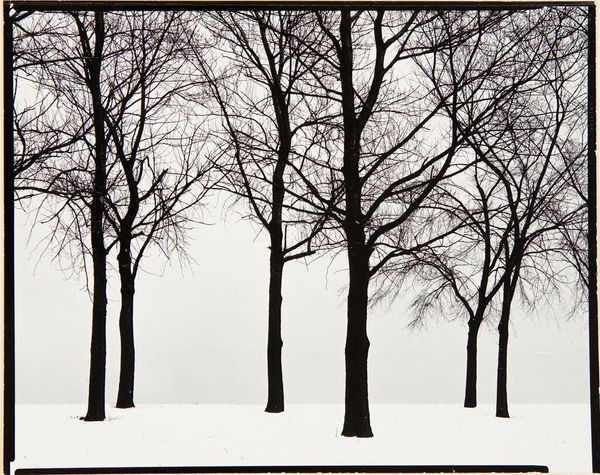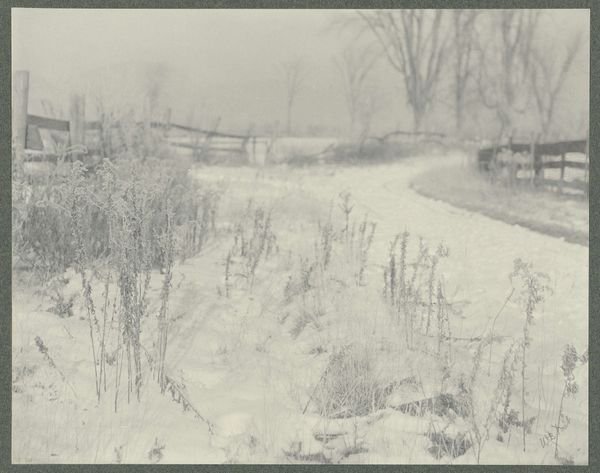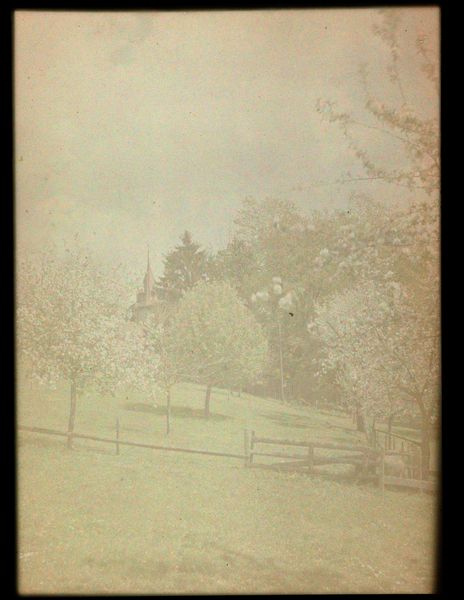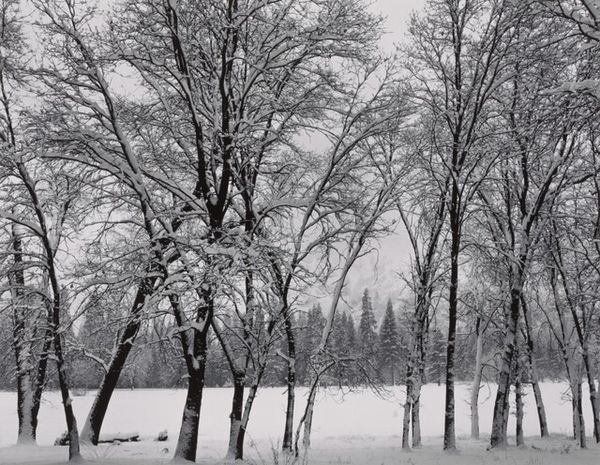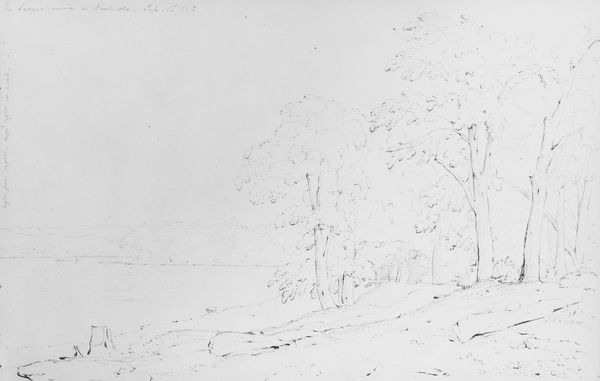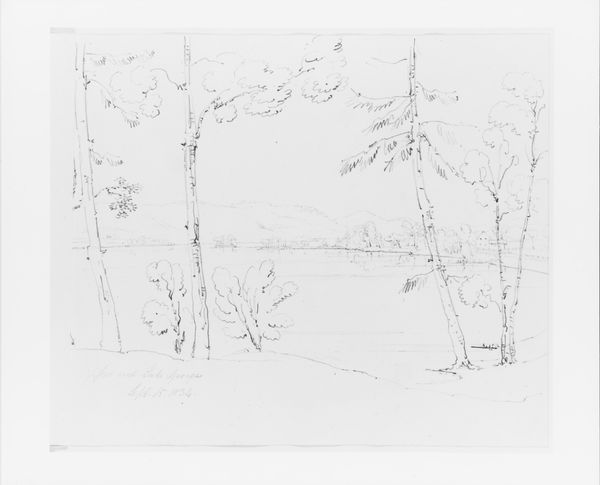
photography, glass, gelatin-silver-print
#
black and white photography
#
impressionism
#
nature photography
#
landscape
#
winter
#
photography
#
glass
#
gelatin-silver-print
Dimensions: 6.8 × 4.7 cm (masked image); 7.8 × 5.7 cm (image); 8.2 × 10.2 cm (slide)
Copyright: Public Domain
Curator: Let's turn our attention to Alfred Stieglitz’s gelatin-silver print, "Snowscape, Berlin," which he created sometime between 1888 and 1892. What's your initial response to this work? Editor: Stark and ethereal. The black and white intensifies the winter scene, making it feel like a memory half-recalled, full of delicate lines. It’s a bit melancholic, I think, or perhaps serene. Curator: It is certainly evocative. Considering Stieglitz's methods, the gelatin-silver process allowed for a crispness that suited his modern vision, pushing photography toward artistic recognition, but also think of how this aesthetic democratized the experience. Suddenly, you don’t need artistic training to reproduce something like a photograph. Editor: Absolutely, the lack of color underscores certain universal ideas associated with winter. The trees burdened with snow resemble skeletal structures. They symbolize endurance but also the dormancy of life. I notice how they frame what might be path; the artist employs negative space and directs the eye along it into the light and stillness beyond. Curator: It makes you think about consumption, doesn't it? The consumption of resources to print these photographs and also the role photography itself plays in documenting environments – and their degradation by labor practices at that time. His photos circulated widely. What did that say? Editor: An important consideration. Perhaps Stieglitz's aim wasn't merely documentation but interpretation – elevating the common, such as snow-laden trees, to the level of fine art, suggesting an inherent symbolic beauty available to all. One also associates winter, the colors white and grey, with mourning. It could be tied to various movements for emancipation and mourning historical injustice during this time, movements he certainly supported. Curator: A critical point, as he worked to establish photography as an art form deserving of the same respect as painting or sculpture. But photography's rapid dissemination and commercial application created mass cultural awareness. Editor: Yes, seeing it through that lens enriches the experience and speaks to layers of symbolism, moving it far beyond simple reproduction, which is where one might expect to leave the analysis. It speaks more precisely to the complicated emotions of mourning. Curator: It's fascinating how the material considerations ultimately feed back into questions of meaning. Editor: Precisely, now I depart seeing the image much differently – as more than a surface of trees covered in white.
Comments
No comments
Be the first to comment and join the conversation on the ultimate creative platform.
